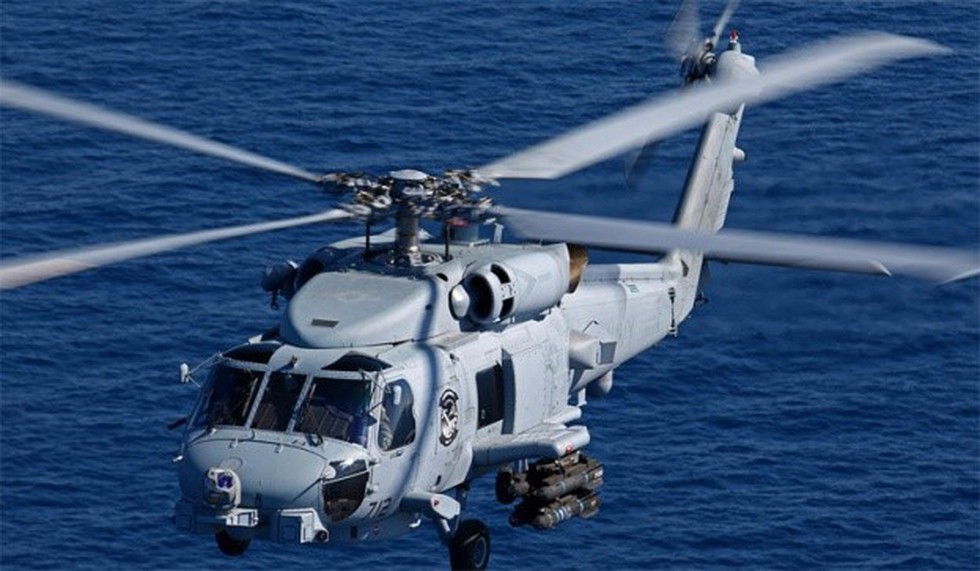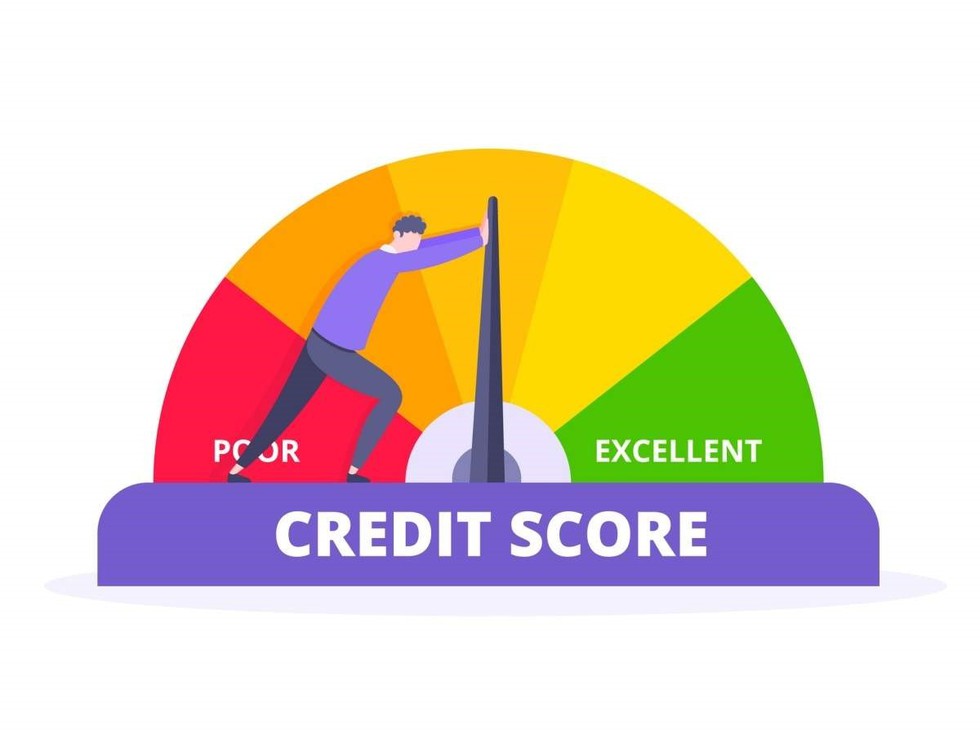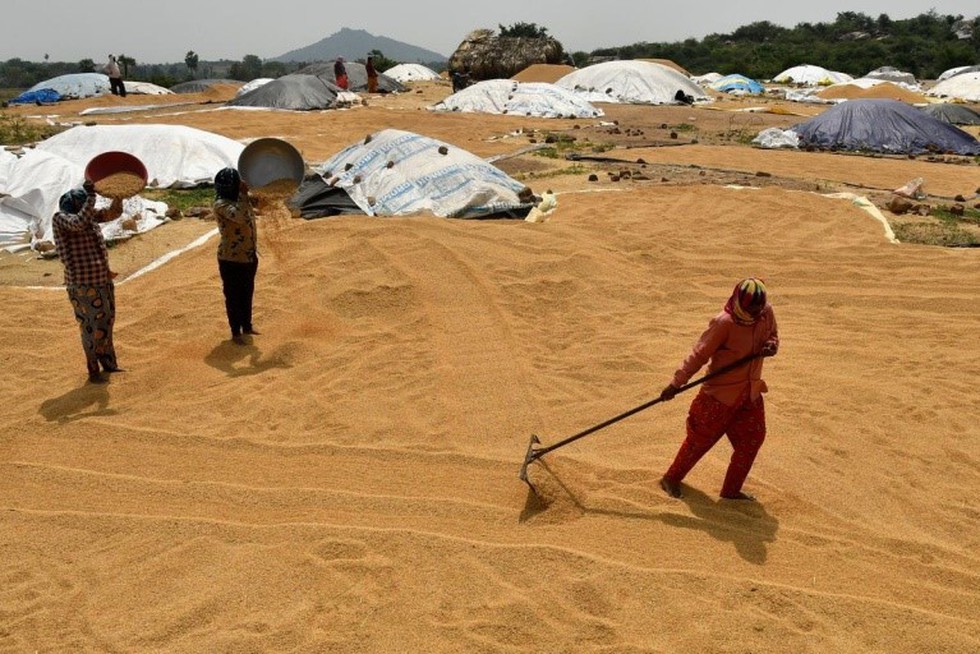
About MH-60 Romeo Helicopter:
- It is the world’s most advanced maritime helicopter and is the most capable naval helicopter available today designed to operate from frigates, destroyers, cruisers and aircraft carriers.
- It is manufactured by US defence major Lockheed Martin.
- It is an all-weather helicopter designed to support multiple missions with state-of-the-art avionics and sensors.
- Main missions of the MH-60R Seahawk are Anti-Submarine Warfare (ASW) and Anti-Surface Warfare (ASuW).
- This helicopter can detect and track submarines and surface ships and attack with torpedoes and missiles.
- Secondary missions are search and rescue, combat search and rescue, vertical replenishment, medical evacuation and insertion and extraction of special forces.
- Features:
- This helicopter is operated by a crew of 4 in anti-submarine warfare role and crew of 5 in anti-surface warfare role. It can also accommodate additional passengers.
- It carries advanced airborne active sonar, multi-mode search radar and nose-mounted forward-looking infrared (FLIR) turret.
- The helicopter has an integrated self-defense system.
- Maximum Speed: 267 km/h
- Range: 454 km

About Small Finance Banks (SFBs):
- SFBs are specialized banks that are licensed by RBIto provide financial services and products to low-income individuals and underserved communities, including microfinance and micro-enterprise services, as well as other basic banking services.
- Aim:
- To provide financial inclusion to these segments of the population who are often excluded from the traditional banking system.
- SFBs help them to have access to financial products such as small loans, savings, insurance, and other basic banking services.
- SFBs are registered as public limited companies under the Companies Act, 2013 and governed by Banking Regulations Act, 1949; RBI Act, 1934 and other relevant Statutes and Directives from time to time.
- The guidelines for SFBS were introduced in 2014 by RBI. RBI Guidelines on SFBs in India are:
- SFBs are granted the scheduled bank status after being operational and are deemed suitable under section 42 of the RBI Act,1934.
- SFBs are required to primarily focus on providing access to financial services to the unbanked and underbanked segments of the population.
- They are required to maintain a minimum Capital to Risk-Weighted Assets Ratio (CRAR) of 15%.
- They are required to extend 75% of their Adjusted Net Bank Credit to Priority Sector Lending.
- SFBs are required to open at least 25% of their total branches in unbanked rural areas.
- The minimum paid-up voting equity capital for small finance banks shall be Rs.200 crore.
- SFBs are required to maintain at least 50% of their loan portfolio as microfinance and advances of up to Rs. 25,00,000.
- SFBs are required to comply with various prudential norms and regulations related to income recognition, asset classification, and provisioning.
- SFBs are encouraged to adopt technology to improve their operational efficiency and reach the target segments.

About CIBIL (Credit Information Bureau (India) Limited) score:
- It is a three-digit numeric summary of your credit history.
- CIBIL or Credit Information Bureau (India) Limited maintains and calculates your credit score.
- Value: The value of Credit Score may range between 300 to 900.
- Lenders can check the CIBIL report and CIBIL Score/CIBIL Rank to evaluate the risk of lending to applicants and accordingly approve or reject new loan/credit card applications
- The closer a CIBIL Score is to 900, the higher are the chances of the consumer's credit card or loan application getting approved.
- How is CIBIL Score calculated?
- It is derived using the credit history found in the CIBIL Report.
- It takes into account borrowers’ credit profile over the last 36 months.
- The credit profile includes all kinds of loans such as home loans, credit cards, personal loans, automobile loans, overdraft facilities etc that one has availed and their payment history.
Credit Information Bureau (India) Limited (CIBIL):
- It is the leading credit bureau and Credit Information Company (CIC) licensed by Reserve Bank of India.
- Primary Function: To collect and maintain financial data as provided by the lenders to further generate and provide credit reports and credit scores for its customers.
- It maintains credit files on 600 million individuals and 32 million businesses.
- CIBIL India is part of TransUnion, an American multinational group. Hence credit scores are known in India as the CIBIL Transunion score.
What is CIBIL Report?
- It is a consolidated credit report that includes the consumer's CIBIL Score and credit summary, personal information, contact information, employment information, and loan account information.
- It is important to note that lenders consider both the CIBIL Score and Report to assess a person's loan eligibility.

About Offer For Sale (OFS):
- What is it? OFS is a simpler method of share sale through the exchange platform for listed companies.
- The OFS method was brought in by the Securities and Exchange Board of India (SEBI) in 2012 as a simpler one to aid promoters of listed forms to dilute their stake and comply with the minimum public shareholding norms by June 2013.
- The method was largely adopted by listed companies, both state-run and private, to adhere to the SEBI order.
- Later, the government started using this route to divest its shareholding in public sector enterprises.
- Features:
- Unlike a follow-on public offering (FPO), where companies can raise funds by issuing fresh shares or promoters can sell their existing stakes, or both, the OFS mechanism is used only when existing shares are put on the block.
- Only promoters or shareholders holding more than 10 per cent of the share capital in a company can come up with such an issue.
- The mechanism is available to 200 top companies in terms of market capitalisation.
- In an OFS, a minimum of 25 per cent of the shares offered, are reserved for mutual funds (MFs) and insurance companies. At any point, no single bidder other than these two institutional categories is allocated more than 25 per cent of the size of the offering.
- A minimum of 10 per cent of the offer size is reserved for retail investors.
- A seller can offer a discount to retail investors either on the bid price or on the final allotment price.
- It is mandatory for the company to inform the stock exchanges two banking days prior to the OFS about its intention.
- Anyone can bid for these shares, be it foreign institutional investors, retail investors or companies.

About Himalayan Brown Bear:
- It is a large carnivore found in the high-altitude regions of the Himalayas.
- Scientific Name: Ursus arctos isabellinus
- Distribution:
- They are found in North-western and central Himalaya, including Pakistan, India, Nepal, the Tibetan Autonomous Region of China and Bhutan.
- They are found above the timberline, between 3,000 and 5,500 meters (9,800 and 18,000 feet) above sea level.
- In India, this species exists in small isolated populations in the fragmented alpine and subalpine habitats of Jammu and Kashmir, Himachal Pradesh, and Uttarakhand.
- Features:
- It is the largest mammal in the region, males reaching up to 2.2 m (7 ft) long, while females are a little smaller.
- The bears are omnivorousand hibernate in dens during the winter.
- It has thick fur which is most often sandy or reddish-brown in colour.
- Conservation Status:
- IUCN Red List: Critically Endangered
- Wildlife (Protection) Act of 1972: Schedule I
- CITES - Appendix I

About Grain Storage Plan:
- In order to ensure time-bound and uniform implementation of the Plan in a professional manner, the Ministry of Cooperation will implement a pilot project in at least 10 selected districts.
- The Pilot would provide valuable insights into various regional requirements of the project, learnings from which will be suitably incorporated for country-wide implementation of the Plan.
- An inter-ministerial committee (IMC) will be formed under the chairmanship of the Minister of Cooperation, with ministers of Agriculture and Farmer's Welfare, Consumer Affairs, Food and Public Distribution, Food Processing Industries, and secretaries as members “to modify guidelines/ implementation methodologies of schemes of the respective ministries as and when the need arises”.
- Aim: To address the shortage of agricultural storage infrastructure in the country by facilitating the establishment of godowns at the level of primary agricultural credit societies (PACS) and also enables PACS to undertake various other activities.

About Electronics Repair Services Outsourcing (ERSO) initiative:
- It aims to promote India as a hub for repairing electronic goods and to assess the feasibility and potential of capturing 20% of the global repair service market within five years.
- The pilot is being held in Bengaluru and will be run for three months.
- India’s e-waste policy will be modified to enable repair companies to domestically recycle 5% of imported goods by weight on a trial basis.
- The repaired goods will not be permitted to be sold in the domestic market.
- New provisions will be made to allow their exportation to regions other than their country of origin.
- Nodal Ministry: Ministry of Electronics & IT.

Why in the news?
- According to the new law, tribal people can get recognition only for the land they have been occupying since before the constitution of the country came into effect in 1988.
Key facts about the Guarani tribe:
- The Guarani were one of the first peoples contacted after Europeans arrived in South America around 500 years ago.
- In Brazil, there are today around 51,000 Guarani living in seven states, making them the country's most numerous tribes. Many others live in neighbouring Paraguay, Bolivia, and Argentina.
- These people in Brazil are divided into three groups: Kaiowá, Ñandeva and M’byá, of which the largest is the Kaiowá which means ‘forest people’.
- They are deeply spiritual people.
- Most communities have a prayer house, and a religious leader, whose authority is based on prestige rather than formal power

About CITIIS 2.0 Program:
- It is a program conceived by the Ministry of Housing and Urban Affairs (MoHUA) in partnership with the French Development Agency (AFD), Kreditanstalt für Wiederaufbau (KfW), the European Union (EU), and National Institute of Urban Affairs (NIUA).
- The program will run for four years, i.e., from 2023 to 2027.
- Objective: The program envisages supporting competitively selected projects promoting a circular economy with a focus on integrated waste management at the city level, climate-oriented reform actions at the State level, and institutional strengthening and knowledge dissemination at the National level.
- Funding: The funding for this program would include a loan from AFD and KfW and a technical assistance grant of Rs.106 cr from the EU.
- It has three major components:
- Component 1: Financial and technical support for developing projects focused on building climate resilience, adaptation and mitigation in up to 18 smart cities through a selection of competitively selected projects promoting a circular economy with a focus on integrated waste management.
- Component 2: All States and UTs will be eligible for support on-demand basis.
- The States will be provided support to (a) set up/strengthen their existing State climate centres / Climate cells / equivalents (b) create State and city-level Climate Data Observatories (c) facilitate climate-data-driven planning, develop climate action plans and (d) build capacities of municipal functionaries. To achieve these objectives, the PMU at NIUA will coordinate the provision of technical assistance and strategic support to State Governments.
- Component 3: Interventions at all three levels; Centre, State and City to further climate governance in urban India through institutional strengthening, knowledge dissemination, partnerships, building capacity, research and development to support scale-up across all States and Cities.

About Lightweight and portable payment system:
- The RBI has conceptualized this system which it is calling a bunker which is an equivalent of digital payments that can be operated from anywhere by a bare minimum staff in exigencies such as natural calamities or war.
- It is expected to operate on minimalistic hardware and software and would be made active only on a need basis.
- The infrastructure for this system will be independent of the technologies that underlie the existing systems of payments such as UPI, NEFT, and RTGS.
- The system is expected to process transactions that are critical to ensure the stability of the economy, including government and market-related transactions.
- The existing conventional payment systems such as RTGS, NEFT, and UPI are designed to handle large volumes of transactions while ensuring sustained availability.
- As a result, they are dependent on complex wired networks backed by advanced IT infrastructure.
What is NEFT?
- The National Electronic Funds Transfer is an electronic method of transferring money online.
- It enables transferring funds from the account maintained with any bank to any other bank branch, provided the transaction is attempted between the banks that participate in the NEFT payment system.
- The payments made via NEFT are processed and settled half hourly batches and transactions can be performed 24*7.
- Minimum Transfer Value: Rs. 1
- Maximum transfer value: No limit
- Money transfer made through NEFT does not require any additional transaction costs.
What is RTGS?
- It stands for Real-time Gross Settlement, which is a payment mode where the money is transferred from one bank account to the other in real time, without any delay.
- It is mostly used for transactions of high value.
- When using the banking method, RTGS is the fastest possible way to transfer money.
- Transactions made through RTGS are processed on a one-to-one basis and transactions can be performed 24*7.
- Minimum Transfer Value: 2 lakh
- Maximum transfer value: No upper limit is there, but can vary between banks.


.jpg)
.jpg)

























































































































































.png)
.png)
.png)
.png)
.png)


.png)
.png)
.png)





.png)
.png)






.png)
.png)
.png)
.png)
.png)
.png)
.png)
.png)
.png)

.png)







.png)
.png)


.png)
.png)
.png)


.png)

.png)
.png)





.jpg)

.png)
.png)


.png)

.png)
.png)
.png)

.jpg)

.jpg)


.png)

.png)
.png)
.png)
.png)
.png)
.png)
.png)
.png)
.png)
.png)




.png)

.png)





.png)
.png)
.png)
.png)
.png)
.png)
.png)
.png)
.png)
.png)
.jpg)
.jpg)

.png)
.png)
.png)
.png)
.png)
.png)
.png)
.png)
.png)
.png)
.png)
.png)
.png)
.png)
.png)
.png)
.png)
.png)
.png)
.png)
.png)
.png)


.png)
.png)



.jpg)
.jpg)
.jpg)
.jpg)
.jpg)

.jpg)








.jpg)
.jpg)
.jpg)
.jpg)
.jpg)

















.jpg)
.jpg)







.jpg)


















.jpg)
.jpg)






























































































.jpg)
.jpg)


























.jpg)

.jpg)










.jpg)








.jpg)




.jpg)










.jpg)


















.jpg)












































.jpg)














.jpg)
.jpg)
.jpg)





.jpg)

.jpg)
.jpg)





































































.jpg)


































.jpg)
.jpg)
















































.jpg)












.jpg)


.jpg)




.jpg)
.jpg)
.jpg)

.jpg)
.jpg)
.jpg)
.jpg)

.jpg)
.jpg)
.jpg)

.jpg)
.jpg)
.jpg)
.jpg)
.jpg)
.jpg)
.jpg)
.jpg)

.jpg)


.jpg)
.jpg)
.jpg)
.jpg)
.jpg)
.jpg)
.jpg)
.jpg)
.jpg)
.jpg)











.jpg)
.jpg)





.jpg)
.jpg)
.jpg)
























.jpg)
























.jpg)









.jpg)
.jpg)







.jpg)
.jpg)









































.jpg)
.jpg)
.jpg)
.jpg)
.jpg)

.jpg)
.jpg)
.jpg)
.jpg)
.jpg)


.jpg)
.jpg)
.jpg)
.jpg)
.jpg)

.jpg)
.jpg)
.jpg)
.jpg)
.jpg)
.jpg)
.jpg)
.jpg)
.jpg)
.jpg)
.png)

.png)
.png)

.png)
.png)
.png)
.png)


.jpg)
.jpg)

.jpg)
.jpg)
.jpg)

.png)
.png)
.png)
.png)
.png)
.png)
.png)

.png)
.png)
.png)
.png)
.png)
.png)
.png)
.png)
.png)
.png)





































































-min.png)



.png)




.png)








































